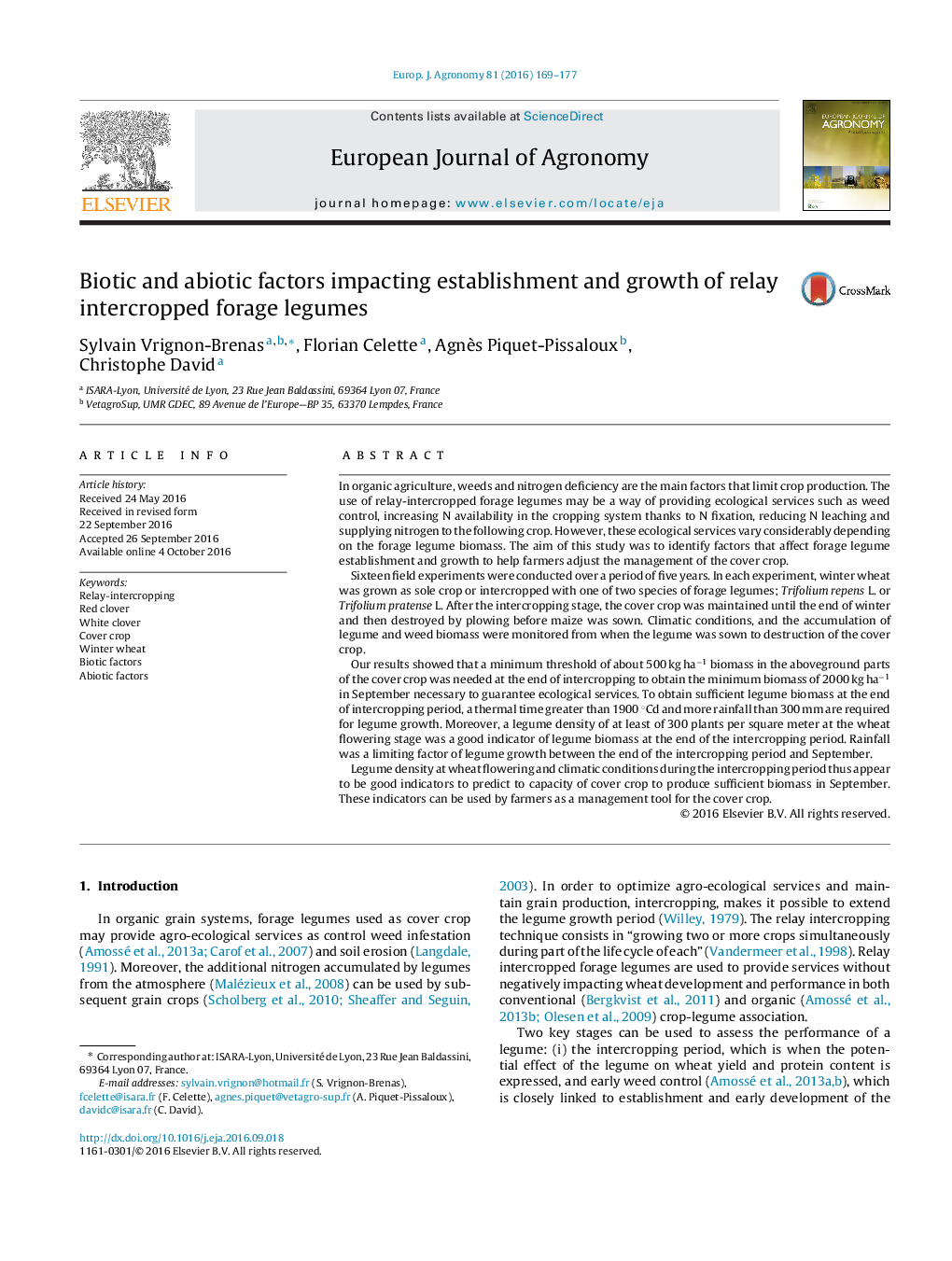| کد مقاله | کد نشریه | سال انتشار | مقاله انگلیسی | نسخه تمام متن |
|---|---|---|---|---|
| 4508667 | 1624444 | 2016 | 9 صفحه PDF | دانلود رایگان |
• Legume density at wheat flowering largely explained legume biomass at wheat harvest.
• Thermal time and cumulative rainfall explain legume biomass at wheat harvest.
• A clover biomass of 500 kg ha−1 at wheat harvest guaranteed 2000 kg ha−1 in September.
• Recovery of legume during summer might be provided by sufficient rainfall.
In organic agriculture, weeds and nitrogen deficiency are the main factors that limit crop production. The use of relay-intercropped forage legumes may be a way of providing ecological services such as weed control, increasing N availability in the cropping system thanks to N fixation, reducing N leaching and supplying nitrogen to the following crop. However, these ecological services vary considerably depending on the forage legume biomass. The aim of this study was to identify factors that affect forage legume establishment and growth to help farmers adjust the management of the cover crop.Sixteen field experiments were conducted over a period of five years. In each experiment, winter wheat was grown as sole crop or intercropped with one of two species of forage legumes; Trifolium repens L. or Trifolium pratense L. After the intercropping stage, the cover crop was maintained until the end of winter and then destroyed by plowing before maize was sown. Climatic conditions, and the accumulation of legume and weed biomass were monitored from when the legume was sown to destruction of the cover crop.Our results showed that a minimum threshold of about 500 kg ha−1 biomass in the aboveground parts of the cover crop was needed at the end of intercropping to obtain the minimum biomass of 2000 kg ha−1 in September necessary to guarantee ecological services. To obtain sufficient legume biomass at the end of intercropping period, a thermal time greater than 1900 °Cd and more rainfall than 300 mm are required for legume growth. Moreover, a legume density of at least of 300 plants per square meter at the wheat flowering stage was a good indicator of legume biomass at the end of the intercropping period. Rainfall was a limiting factor of legume growth between the end of the intercropping period and September.Legume density at wheat flowering and climatic conditions during the intercropping period thus appear to be good indicators to predict to capacity of cover crop to produce sufficient biomass in September. These indicators can be used by farmers as a management tool for the cover crop.
Journal: European Journal of Agronomy - Volume 81, November 2016, Pages 169–177
